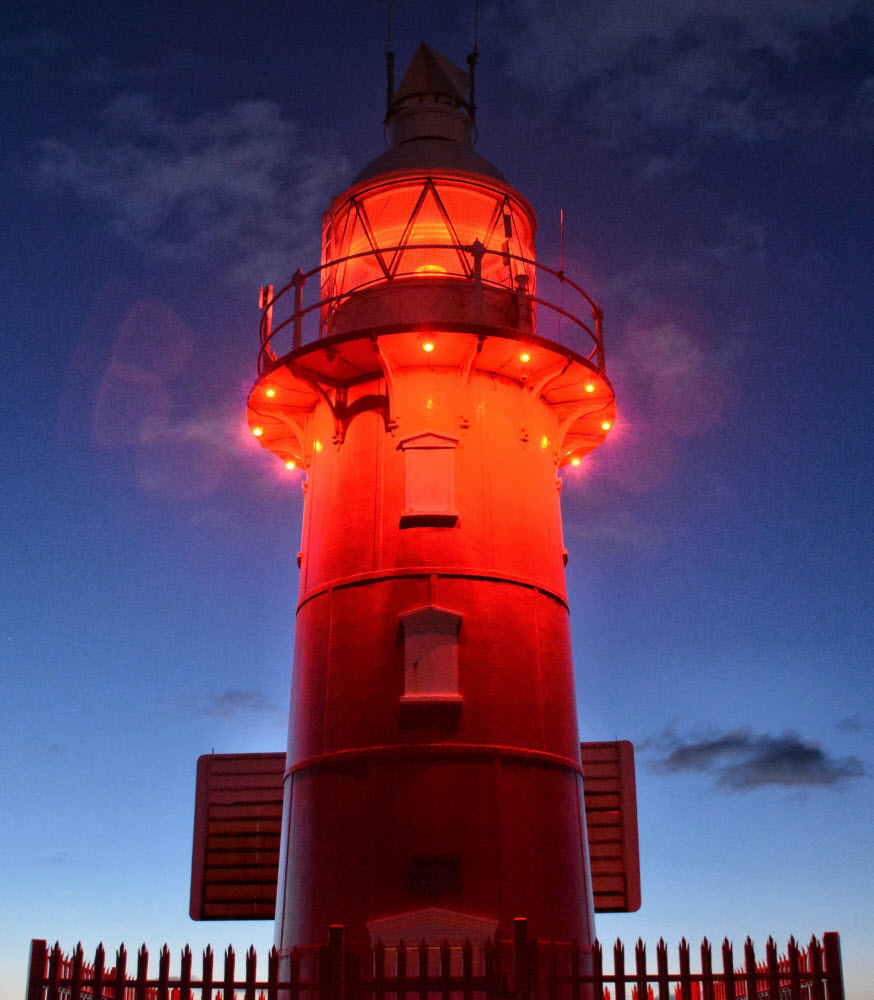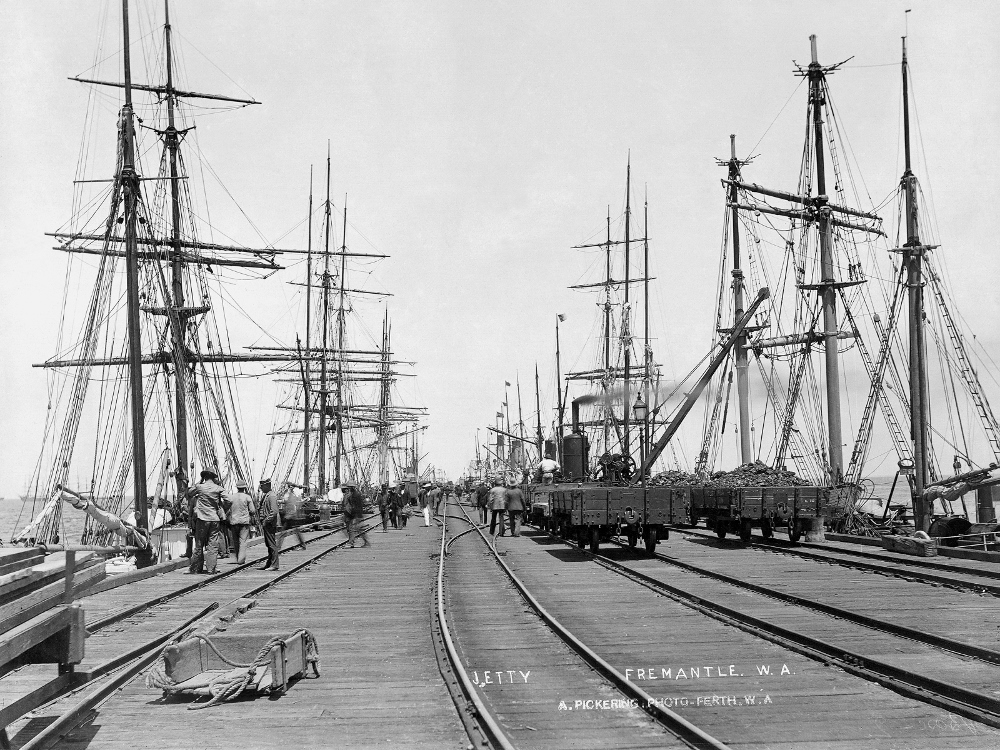Chief Engineer of Western Australia Charles Yelverton O'Connor designed the Fremantle Inner Harbour.
Irish engineer Charles Yelverton O’Connor is best known for his work in Australia, with two of his most notable achievements being the design of Fremantle Harbour and the Goldfields Water Supply Scheme. At the time he was recruited from New Zealand as Chief Engineer by the Premier John Forrest, the Western Australian gold rush and associated population growth was making the creation of a sheltered harbour more urgent. CY O’Connor assessed several options and successfully lobbied for his vision for an Inner Harbour scheme within the entrance to the Swan River. Work began in 1892. The first major task involved the construction of the North and South moles, using rock quarried from Rocky Bay (Swan River) and Boya (south side of Greenmount Hill in the Mundaring Shire). Next came drilling and blasting, with 6 dredges then used to remove about 7.3 million cubic metres of sand and rock to create the harbour.
The wharves are of marginal design (constructed along the shoreline) rather than the finger piers (at right angles to the shore) that were favoured by most Australian ports at that time. This foresight to construct a port with greater width was a key decision in enabling the port to provide for future shipping. CY O’Connor’s legacy to Western Australians is that he had the courage to pursue his long-term vision for public works. He understood that ports are living, dynamic operations and that to service their communities they need to be able to respond to changing technologies and to expand. At the time of the construction of the Port of Fremantle, ports all round the world had to respond to the change from sail to steam, from timber to iron ships, to larger vessels and to increasingly mobile communities and economies. The challenges of change are with us still as ports need to be responsive to new technologies and trade trends. An impressive bronze statue of CY O’Connor by Pietro Porcelli that was unveiled by Sir John Forrest on 23 June 1911 is located near the entrance to the Fremantle Ports Administration Building on Victoria Quay.
.jpg?sfvrsn=493f67ac_0)

South Mole and North Mole lighthouses
These cast-iron lighthouses were designed by Western Australian Engineer-in-Chief CY O’Connor and manufactured by Chance Brothers in Birmingham, England. The South Mole Lighthouse was first lit in 1903, operating a fixed green light over 17 km. Now automated, it is still used to mark the starboard (right) side of the Fremantle Inner Harbour entrance with a quick-flash sequence. A red (port side) lighthouse (see photo left) of identical construction is on North Mole. This lighthouse was first lit in 1906, operating a fixed red light over 17 km. Now automated, it is still used to mark the port (left) side of the Fremantle Inner Harbour entrance with a quick-flash sequence.
Slip Street and workshop buildings
Slip Street was shaped throughout the history of Victoria Quay. Its alignment follows the original railway line that extended from the shunting yards to South Mole. By 1940, these tracks had been replaced by road, however, sections of the track are believed to still exist beneath Slip Street. Following World War II, Slip Street became the hub for port workshops and stores. It provided direct access to the Public Works Slipway at the far western end of Victoria Quay. While some of the port workshops are still operating, others have been repurposed. Slip Street runs by a collection of workshops built in the years prior to 1960, for various trades to service the Port of Fremantle. Trades included fitters, electricians, carpenters, shipwrights, painters and others. In the 1960s, the Fremantle Port Authority employed more than 1000 people.
Waiting Rooms
Built in 1928, the building housed a large general waiting room for people to welcome or farewell passengers, a ladies and children’s retiring room, and offices for the wharf foreman and patrolman. The structure has a timber frame, a corrugated iron roof and a northern brick parapet wall, with the remainder of the external walls clad in weatherboard. In later years, the building was repurposed for a variety of other uses, including a police station up until the 1960s.
Slipways
Slipways were used for repairs/maintenance/refits. This also included hull washdown/cleaning, chipping/sandblasting and painting, mechanical and propeller repairs, etc. Vessels slipped included navy, State ships, research, ferries, tugs, pilot boats, work boats, floating landings, whale chasers, dredges, lighthouse tenders and small cargo vessels.
Winch house No1 - Slipway No. 1 (1942-98)
The Public Works Department 1,814-tonne (2000-ton) Slipway was built for defence requirements during WWII. Construction began in October 1940 with operations starting in 1942. The cradle was 288 m long and 83 m wide. In 1957, the slipway was upgraded to handle vessels up to 2,495 tonnes and in 1967 further upgraded to handle vessels up to 3,784 tonnes. The Marine and Harbours Department operated the slipway 1986-88, Swandock in 1988-93, Fremantle Shipwrighting until early 1998, then WA Shipwrighting until December 1998 when the slipway ceased operating.
Winch house No 2 - Slipway No. 2 (1959-98)
In 1957, the Western Australian Government gave approval to replace the old Rous Head slipway. In 1959, a new 544-tonne (600-ton) slipway was completed alongside the 1,814-tonne PWD slipway at Victoria Quay. The cradle was 213 m long and 50 m wide. The Marine and Harbours Department operated the slipway in 1986-88, Swandock in 1988-93, Fremantle Shipwrighting until early 1998, then WA Shipwrighting until December 1998 when the slipway ceased operating.
Winch house No 3 - Slipway No.3 (1958-98)
Fremantle Port Authority (now Fremantle Ports) operated the 91-tonne (100-ton) slipway from 1958-94.
Your visit
Explore what's on at Victoria Quay and start planning your visit by 'starring' the attractions, events, walks or anything else that interests you.
See what's on















